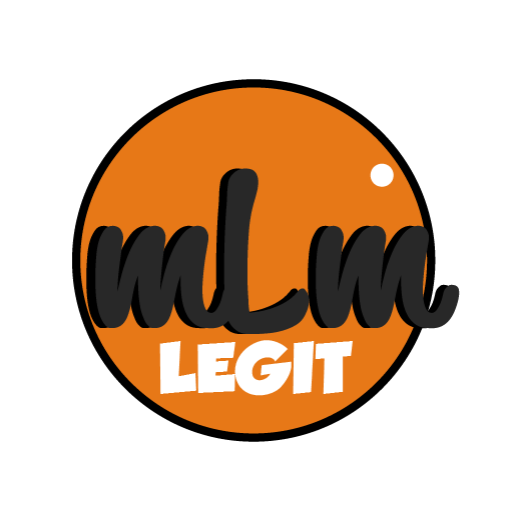Introduction
At the moment, there are more than one thousand different blockchain projects being developed all over the world. Therefore, it can be very difficult for people who are new to investing in cryptocurrencies to choose the best option. In terms of both market capitalization and user interest, Ethereum is the second most significant blockchain network. But several new blockchains are entering the cryptocurrency market with improved functionality. Hyperledger is yet another exciting blockchain venture that has been gaining popularity among financiers as of late.
Ethereum: What Is It?
People who deal in cryptocurrencies are familiar with blockchains, which are a type of digital ledger that facilitates online transactions without requiring a trusted third party to act as a central overseer. Ethereum is a new blockchain platform that was developed after Bitcoin, the first major blockchain initiative, was released. In 2015, during a launch event referred to as Frontier, Ethereum successfully mined its very first block, marking the beginning of the cryptocurrency’s existence.
The Ethereum blockchain went beyond its initial cryptocurrency-issuing use case to become a platform for decentralized applications (dApps). A decentralized application, or dApp, is a piece of software that can be used in conjunction with a smart contract to automate a variety of coding tasks. There are approximately 2,970 decentralized applications running on the Ethereum network at this time, according to stateofthedapps.com.
Functions of Ethereum That Are Particularly Important
In 2014, Canadian computer scientist Vitalik Buterin developed the blockchain technology behind Ethereum. Many other programmers, including Gavin Wood, Charles Hoskinson, Joseph Lubin, Anthony Di Lorio, and Amir Chetrit, have joined the Ethereum blockchain since its inception to help finish and improve it. To put that in perspective, Bitcoin’s market cap peaked at $19.90 trillion, while Ethereum’s was $163.40 billion. Some of the most important aspects of the Ethereum blockchain are as follows:
Conventional Contracts vs. Smart Contracts
Ethereum is built on the concept of smart contracts. Computer programmers write “smart contracts” to automate the execution of a predetermined action in response to the occurrence of a set of specified events. This means that decentralized applications and projects, like transactions, can run on the Ethereum network without any need for a central authority to monitor their progress.
Ethereal Tokens
Ether, also abbreviated as ETH, is the network’s primary cryptocurrency. Ethereum Classic’s native coin, ETC, is distinct from Ethereum 2.0’s ETH. Ethereum can act as a platform for additional cryptocurrency projects, allowing for the creation of even more tokens. It is important to keep in mind that the primary form of virtual currency utilized by a blockchain is referred to as a coin, whereas the secondary forms of cryptocurrency that are hosted on the same blockchains are referred to as tokens.
Divisive Split
Both Ethereum Classic (ETC) and Ethereum (ETH) are well-known among cryptocurrency investors. It should be brought to your attention that there are actually two different blockchains for Ethereum. In 2016, a hacker stole funds from the beacon Ethereum blockchain, prompting its developers to release an update in an attempt to recover those funds. However, not all users were on board with the change, so a hard fork occurred, splitting the network in two: Ethereum 2.0 and Ethereum Classic.
The Ethereum VM
In the same way that the Turin Virtual Machine allows computer programs to process any information based on binary data strings, the Ethereum Virtual Machine does the same thing. The Ethereum Virtual Machine (EVM) is considered the foundational code that defines the network’s architecture, smart contracts, software, and stakeholder interaction.
Organization with Limited Central Control (DAO)
Decentralized autonomous organizations (DAOs) are a specific kind of computer program that uses smart contracts. DAOs provide the members of the Ethereum blockchain community with the opportunity to participate in democratic voting regarding a particular decision. Decentralized autonomous organizations (DAOs) are also automated, and they are made to carry out the functions of allowing participants to cast votes regarding a situation and performing the election process without any additional intervention.
Application Servers Without a Central Control Point (dApps)
The term “decentralized applications” (also abbreviated as “dApps”) refers to blockchain-based applications that can carry out a variety of different online functions while maintaining their ability to function independently and autonomously. DApps, or decentralized applications, are the computerized analogues of native programs for desktop PCs, laptops, and mobile devices. However, Ethereum developers must write DApps in the blockchain-friendly programming language solidity.
Ether’s Blockchain Has Many Benefits
Restricted Ecosystem
Because the Ethereum network is a permission network, anybody from anywhere in the world is free to join the blockchain and contribute to its development. There is no need for third-party validation or permission to join a permissioned blockchain, which is a special kind of distributed ledger. Bitcoin is the world’s first network that combines permissioned transactions with open source software. Ethereum’s permissioned status means that any developer can join the network, develop their own decentralized app, and trade the network’s tokens.
Personal Information Security
Ethereum’s private layers allow it to provide confidential data and secure financial transactions to corporations. What this means is that developers working on the Ethereum network can make decentralized applications or second-layer solutions that are completely closed off and only accessible to selected users.
Scalability
However, Ethereum’s network does have some fundamental scalability problems. Consortium, on the other hand, gives Ethereum users access to improved scalability options for stakeholders beyond those provided by the underlying blockchain network thanks to innovations like the Proof of Authority model.
Tokenization
The Ethereum network is not only capable of hosting DApps, but also gives developers the ability to tokenize their own initiatives. Uses for tokenization go far beyond issuing a custom cryptocurrency for a decentralized application (dApp), including the sale of fractional interests in real estate, the introduction of new products, and the development of novel incentive structures.
Interoperability
Computer programs are said to be interoperable if they are able to talk to one another and share information. Using Ethereum as a backbone, developers can launch parachain projects that let investors transfer cryptocurrencies and other blockchain products between networks directly, without a middleman.
The Ethereum Blockchain’s Weaknesses
Computer Language
The Ethereum blockchain is Turing-compliant, meaning it can process any data represented as a string of binary digits within its design constraints. Ethereum’s core functionality was developed using a language with C++-like syntax. Java, Python, and Solidity are some additional examples of programming languages that are compatible with blockchain technology. However, Solidity is a difficult programming language and there are not many Solidity programmers.
Possible Harm to Your Money
A meandering pattern can be seen in the histogram for the price of ether, which suggests that there is a high probability of investment risks. The monetary value of cryptocurrencies is notoriously unstable. It takes time and practice to become profitable trading cryptocurrencies like Ethereum, making them a difficult investment option for novices.
Problems with Scalability
Meaningful context When compared to Bitcoin’s blockchain, Ethereum’s is not as immutable, but it still has scalability problems. The oversupply of users is primarily due to the over 2,000 DApps running on the Ethereum blockchain. The Ethereum network has massive transaction fees, technical blot spots, hacks, and malfunctions because it cannot scale.
In your own words, please explain what Hyperledger is.
Hyperledger is a distributed platform for building enterprise-grade, permissioned blockchain networks. Blockchain technology was pioneered by the Bitcoin network so that investors could use decentralized cryptocurrencies, and Ethereum made it possible for developers to roll out decentralized applications.
Similar to Bitcoin, Hyperledger is a Linux Foundation project that lets users build their own private blockchains. Fabric, Sawtooth, Iroha, Indy, and Burrow are just some of the frameworks that can be found in the open-source project Hyperledger. Hyperledger is an open source software consortium that develops and deploys blockchain applications for business use.
What Hyperledger Is Good At
Integral Part of the Consensus Layer
To ensure that only valid transactions are recorded on a given block, Hyperledger’s Consensus layer is responsible for generating one-of-a-kind orders and verifying all of the terms and conditions involved.
Computerized Contract
Hyperledger’s smart contract layers expedite the approval process by screening incoming transaction requests against a set of criteria.
Communication
The Hyperledger communication layer is a messaging protocol that facilitates communication between the parties involved in a transaction through the use of decentralized, peer-to-peer networks.
Managing Your Identity
Identity management services on Hyperledger are essential for verifying the ownership statuses of stakeholders and making certain that transactions on the network are legitimate.
APIs
Using Hyperlegder’s application programming interfaces (APIs), users of the network can interact with other blockchains and third-party programs to share data, conduct transactions, communicate, and trade digital currencies.
Benefits of Using Hyperledger
Designer of Modular Buildings
Because of its modular architecture, Hyperledger lets developers make their own plug-in protocols. Hyperledger’s modular design makes it feasible for businesses to build permissioned blockchains while also integrating third-party systems like identity management.
Authorized Blockchain
Hyperledger is a platform for businesses to build private blockchain networks with permissions. This means that only approved users can participate in and view transactions on these permissioned blockchains. The Hyperlegder Fabric framework is, like Hyperlegder itself, an invite-only network accessible only to those who have been granted access. Hyperledger also allows for granular access control based on the permissions of individual users.
The Scalability and Efficiency of the System
Since Hyperledger does not employ a Proof-of-Work consensus model, there is no need for mining. PoW blockchains typically experience longer transaction processing and verification times.
Hyperlegder’s scalability is much greater than that of conventional blockchains. Because they take place on a collection of permissioned networks with an insignificant user base, transaction times are also low.
Dividing Up Information
Concern over the privacy of their internal financial dealings is a constant for privately held businesses. However, the encryption provided by blockchain technology alone cannot ensure the safety of an international organization’s financial data. In a decade, the general public will have access to quantum computers, which will make it possible to perform billions of calculations in a nanosecond. Hyperledger Fabric, on the other hand, has introduced data partitioning channels that can efficiently deal with the problem.
Checking Capability
Users of Hyperledger have the ability to develop their own querying protocols by utilizing the LevelDB technology. It’s a key-value store that uses JSON as its storage format. There is no longer any need to make frequent changes to applications in order to improve the speed and efficiency of the querying process thanks to the JSON database.
Deficiencies in Hyperledger
Transparency
Hyperledger is not transparent because it is a permissioned blockchain, whereas transparency is a key feature of public blockchains. Furthermore, Hyperlegder’s B2B and B2C blockchains each assign a different level of entrance approval, some of which does not provide full transparency for all participants.
Cryptocurrencies
There is no problem with tokens or cryptocurrencies on Hyperledger. This means that the users who are validating its nodes and conducting transactions receive no benefit from doing so. However, there are those who disagree and point out that the network cannot support anonymous transactions or that mining is unnecessary.
Model of Consensus
Due to its lack of a Proof-of-Work consensus model, Hyperledger has taken a lot of heat from the community. Due to the replacement of its data security protocol with an Identity management system on Hyperledger, the absence of PoW can compromise the integrity of the data stored in the ledger. Additionally, Hyperledger loses its immutability due to the lack of PoW. Furthermore, businesses on the network should use a tamper-evident mechanism tailored to checking hashes for alterations.
Hyperledger and Ethereum: Key Distinctions
Computing Languages
Hyperledger is a permissioned blockchain platform built on Golang for coding blockchains. Ethereum, on the other hand, is a blockchain where Solidity is used to write smart contracts. The relative ease of Golang development over Solidity programming has led to a greater number of Golang developers.
Purpose
In order to create distributed applications, the Ethereum blockchain’s primary function is to enable users to execute smart contracts written in EVMs. Hyperledger, on the other hand, is built on a modular framework that lets developers build pluggable applications that can be used to build enterprise-grade permissioned blockchains.
Tokens
For the Ethereum Classic blockchain, the native token is called ETC, while ETH is the name of the native token for Ethereum 2.0. Additionally, developers on the Ethereum network are able to tokenize any DApp that runs on the network. Hyperledger, on the other hand, doesn’t let developers incentivize blockchain use in any way because it doesn’t have any cryptocurrency or token issuing protocols.
Confidentiality
Since Ethereum is a public blockchain, or permission-less network, all transactions conducted on the network are visible to anyone with Internet access. The developers are granted the ability to create second-layer decentralized applications on the Ethereum network, but these applications must be permissioned or private. Hyperledger, on the other hand, is a permissioned network and blockchain generator that is solely focused on safeguarding the data of commercial enterprises through the use of mechanisms like Data Partitioning Channels.
Expenditures incurred during a transaction
Only those who have been granted access to the network can use the Hyperledger blockchain. Due to this, the blockchain does not currently feature any transaction fees that could be used to financially reward the network’s miners. However, the Ethereum network employs a Proof-of-Work consensus mechanism, which necessitates transaction fees from transaction facilitators as payment to miners.
Agreement Process
No-op (consensus-free transactions) and PBFT (Practical Byzantine Fault Tolerance) are two methods that can be used for validating nodes in Hyperledger. With PBFT, all parties to a transaction are guaranteed to reach an amicable financial settlement. The Proof-of-Work (PoW) consensus model is used by the Ethereum network. This model requires miners to validate transactions on each blockchain by employing computational power.
Ethereum and Hyperledger each have their own set of advantages and disadvantages. Before making a decision between the two blockchain initiatives, it is important to consider the needs of the users. Hyperlegder is the best option for business users. Organizations in the financial sector and others have a duty to maintain the confidentiality of their customers’ records and dealings for an extended period of time. As a result, businesses will incur costs if they use the Ethereum network for private transactions.
However, a typical cryptocurrency investor cannot demonstrate any enthusiasm for the Hyperledger network. Since Hyperlegder blockchains are designed exclusively for business use, they do not support token issuance, public transactions, or user participation. No miners, cryptocurrency traders, or other malicious actors are needed for Hyperledgers to function. Hyperledger is only available for use in the development of permissioned and private blockchains for use within private organizations.
Conclusion
Hyperledger is an alternative blockchain that debuted in 2016 as an invite-only system without a cryptocurrency or mining component. Ethereum, on the other hand, is a permissionless blockchain that anyone can use to conduct open and auditable transactions; it was conceived of in 2014. Decentralized, tokenizable applications (Dapps) are built and hosted on Ethereum. In their own ways, each blockchain has benefits that set them apart from the other.











 Bitcoin
Bitcoin  Ethereum
Ethereum  XRP
XRP  Tether
Tether  Solana
Solana  Dogecoin
Dogecoin  USDC
USDC  Cardano
Cardano  Lido Staked Ether
Lido Staked Ether  TRON
TRON  Chainlink
Chainlink  Avalanche
Avalanche  Sui
Sui  Wrapped stETH
Wrapped stETH  Wrapped Bitcoin
Wrapped Bitcoin  Stellar
Stellar  Toncoin
Toncoin  Hedera
Hedera  Shiba Inu
Shiba Inu  Polkadot
Polkadot  WETH
WETH  LEO Token
LEO Token  Litecoin
Litecoin  Bitcoin Cash
Bitcoin Cash  Hyperliquid
Hyperliquid  Bitget Token
Bitget Token  Official Trump
Official Trump  Uniswap
Uniswap  Pepe
Pepe  Wrapped eETH
Wrapped eETH  USDS
USDS  NEAR Protocol
NEAR Protocol  Ethena USDe
Ethena USDe  Aave
Aave  Aptos
Aptos  Internet Computer
Internet Computer  Ondo
Ondo  WhiteBIT Coin
WhiteBIT Coin  Ethereum Classic
Ethereum Classic  Monero
Monero  Mantle
Mantle  Cronos
Cronos  POL (ex-MATIC)
POL (ex-MATIC)  Render
Render  Dai
Dai  Algorand
Algorand  MANTRA
MANTRA  OKB
OKB 
Leave a Reply